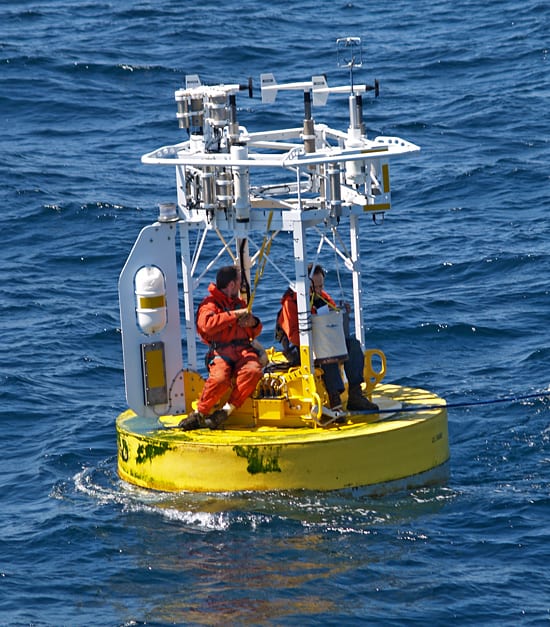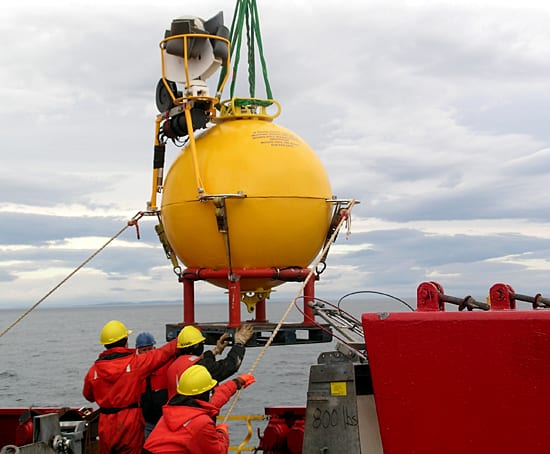Moorings & Buoys
Ocean processes don’t start and stop with the arrival and departure of an oceanographic research vessel. Currents are ceaselessly moving, plankton constantly bloom, the seafloor is continually being built -- all of it happening over months, years, and decades. In order to collect long-term views of these and other processes at work in the ocean, scientists and engineers have devised ways to leave instruments out in the environment. Moored observatories -- secured by wires, buoys, weights, and floats -- are platforms which allow us to observe how the ocean and seafloor change.
Most of us are familiar with common moorings, which use anchors and cables or ropes to secure boats, channel markers, and other floating objects in fixed places in our waterways. Fixed oceanographic mooringsalso known as “Eulerian” platforms -- work on the same principles, but the lines can be thousands of meters long and may or may not poke above the surface of the water. Scientific instruments can be attached to the mooring line, mounted on a surface buoy, or made to climb up and down the underwater line.
Moorings include:
- an anchor -- usually iron weights
- cables -- typically made of steel, nylon, or Kevlar
- bottom floats -- often air-filled glass balls, shrouded in plastic, which keep the mooring string upright, taut, and off the sea bottom
- release mechanisms -- mechanical devices which break the morning chain and allow the instruments to float to the surface upon command by a science technician
- subsurface floats and/or surface buoys -- commonly made of foam or other buoyant, non-compressible materials; also used to keep the mooring upright and support instruments
Above the water, moored buoys may be mounted with meteorological sensors, communications systems (such as satellite or radio transmitters and receivers), and solar panels. Below the water line, buoys hold various instruments, including: current meters, temperature and pressure sensors, sediment traps, chemical sensors, power supplies, data recorders, and acoustic modems.
For decades, WHOI has been a world leader in the design, construction, and deployment of oceanographic moorings. Click on the links below for more information of WHOI mooring operations and achievements.
Learn more
» About Moorings & Buoys
» Mooring & Buoy Systems
» WHOI Mooring Facilities & Services
» Additonal Information


